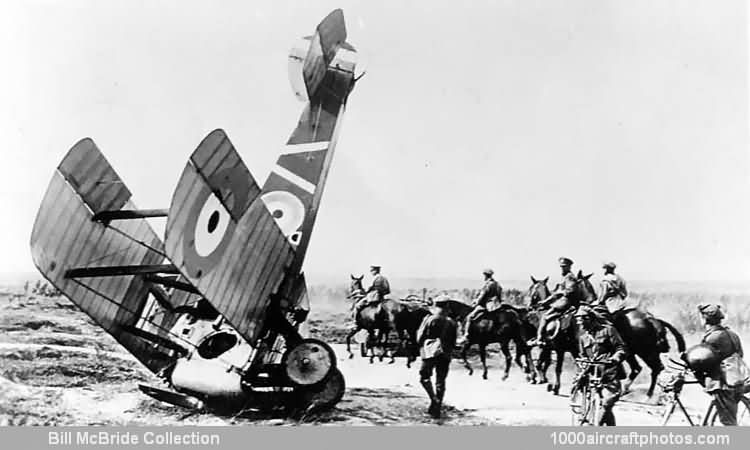The Camel (F.1 and the shipboard version 2F.1) was to be ordered in large numbers from various contractors (Boulton & Paul, British Caudron, Clayton & Shuttleworth, Hooper, March, Jones & Cribb, Nieuport & General, Portholme Aerodrome, Proctor, Ruston, and Sopwith) for both the RFC and RNAS, deliveries commencing in May 1917. A total of 5,597 was ordered, of which 5,490 were apparently delivered.
The F.1 Camel was adapted for the nocturnal intercept role as a replacement for the 1½ Strutter on Home Defence duties. Mostly Le Rhône-powered, Camel night fighters were armed with twin 0.303 in (7.7 mm) guns above the wing center section and firing upwards at an angle of 45º, the cockpit being moved one bay farther aft and the center section cut-out being enlarged. A total of 2,519 F.1 Camels (plus 129 2F.1 Camels) was on RAF charge on October 31, 1918, but these did not survive long after the Armistice, giving place to the Sopwith Snipe.
Camels were often used for bombing, although the aircraft shown above has been examined after its forced-landing, as shown by the opened fuselage hatch, there is still a bomb on the carrier, just visible above the wheel."
The following data relate to the 130 hp Clerget 9B-powered F.1 Camel.
Span: 28 ft 0 in (8.53 m)
Length: 18 ft 9 in (5.71 m)
Height: 8 ft 6 in (2.59 m)
Wing area: 231 sq.ft (21.46 sq.m)
Weight empty: 929 lb (421 kg)
Loaded weight: 1,453 lb (659 kg)
Max speed: 115 mph (185 kmh) at 6,500 ft (1,980 m)
Climb: to 6,500 ft (1,980 m) 6 min
Endurance: 2.5 hr
